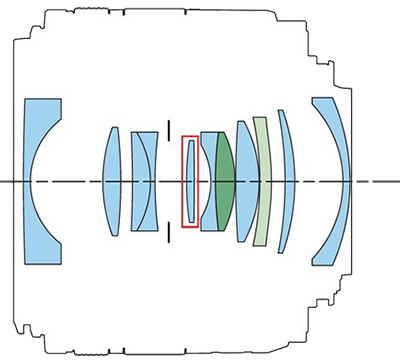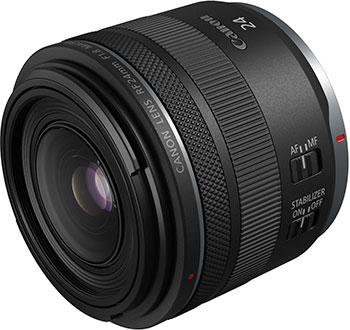- Specifications
- Block diagram
| Marketed | August 2022 |
| Original Price | Open price |
| Lens Construction (group) | 9 |
| Lens Construction (element) | 11 |
| No. of Diaphragm Blades | 9 |
| Minimum Aperture | 22 |
| Closest Focusing Distance (m) | 0.14 |
| Maximum Magnification (x) | 0.5 |
| Filter Diameter (mm) | 52 |
| Maximum Diameter x Length (mm) | Approx. 74.4 ×63.1 |
| Weight (g) | Approx. 270 |
Thanks to a wide 24mm focal length that creates a natural sense of perspective, the lens can be used in a versatile range of shooting scenarios for both photo and video capture. In addition to a maximum shooting magnification of 0.5x and a minimum shooting distance of 0.14 m, the lens’ 24mm focal length makes it ideal for wide-angle macro photography.
A bright aperture of f/1.8 allows for exquisite background and foreground blurring, as well as beautifully smooth “bokeh circles”. What's more, the fast shutter speed capitalizes on ambient brightness, enabling capture of subjects with reduced motion blur. The new lens features an optical design that incorporates 9 elements in 11 groups, including one plastic-mold aspherical lens and one UD (Ultra Low Dispersion) lens, which helps reduce aberrations that hamper image quality, thereby making possible higher-quality image capture.
The lens delivers up to 5.0 stops1 of image stabilization (IS) and when attached to the EOS R series cameras with in-body IS2 (IBIS), the lens and camera IS work in conjunction—when paired with the EOS R5 (released in July 2020), the lens achieves up to 6.5 stops3 of IS. In addition, its compact size, measuring approximately 63.1mm in length and weighing approximately 270g, make the lens easy to carry and use in a variety of scenarios.
1 Based on CIPA standards. When used with the EOS R. Yaw/Pitch axes.
2 List of cameras: EOS R5, EOS R6 (released in August 2020), EOS R3 (released in November 2021), EOS R7 (released in June 2022). As of July 12, 2022.
3 Based on CIPA standards. When used with the EOS R5. Yaw/Pitch axes.

UD lens Aspherical lens IS unit


